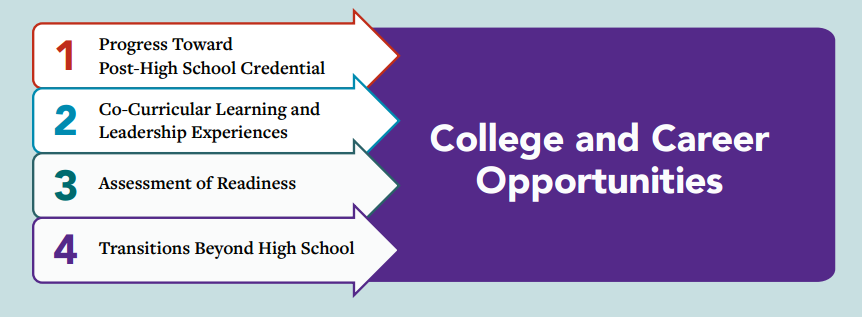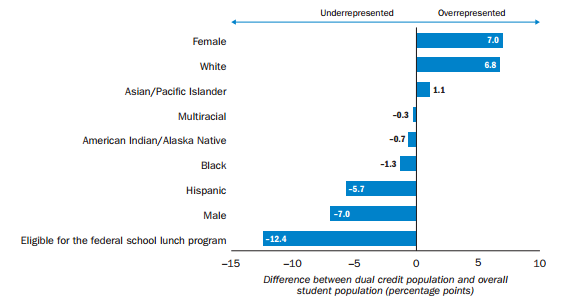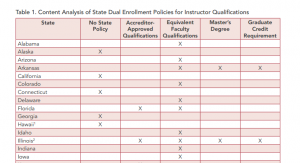Note: This is part of Advance CTE’s blog series, “Getting to Know…” We are using this series to help our readers learn more about specific states, State CTE Directors, partners and more.
 State Name: Kansas
State Name: Kansas
State CTE Director: Connie Beene, Senior Director, Adult & Career Technical Education, Kansas Board of Regents
About Kansas: The Kansas State Board of Regents (KBOR) is the state fiscal agent under the Carl D. Perkins Career and Technical Education Act (Perkins), though Perkins funds are split 50/50 between secondary and postsecondary. Interestingly, many rural districts in Kansas are too small to qualify for the minimum grant award under Perkins, so many partner with regional education service centers to apply as a consortium. This not only allows small districts to qualify for funds, but also fosters greater regional collaboration, with many education service centers providing professional development, resources and networking opportunities for the schools they serve.
Additionally, Kansas is home to a network of 26 community and technical colleges that deliver CTE to college students, adults and dual enrolled high school students.
Programs of Study: At the postsecondary level, CTE programs go through a program alignment process to validate standards, generate employer input and anchor programs in a nationally-recognized industry certification.
Under program alignment, KBOR convenes a business and industry committee specific to each field of study. The committee reviews the program’s standards and credentials and offers recommendations for alignment. Recommendations are reviewed by curriculum experts, approved by institution presidents, and, once approved, put into place across the entire community and technical college network. Programs are updated every five years.
A total of 25 programs have been reviewed, validated and modified through program alignment and are available to students statewide at Kansas community and technical colleges.
At the secondary level, Kansas recognizes the 16 national Career ClustersⓇ. In the 2015-16 academic year, CTE students concentrated in all Clusters but one: Government and Public Administration. Although secondary CTE programs do not go through the same rigorous program alignment process as postsecondary programs, state leaders in the Department of Education are working to better align programs with business and industry needs.
Notable in Kansas – Excel in CTE: One of the biggest successes for Kansas CTE is the Excel in CTE program. Launched in 2012, the program was designed to expand opportunities for CTE students to earn industry-recognized credentials and postsecondary credit in high school. The program includes four components:
- An incentive fund to compensate school districts for the cost of credential examinations
- Free tuition for high school students enrolled in technical courses
- A state-identified list of credentials in high-demand occupations, published annually by the Department of Labor
- A statewide articulation agreement to facilitate concurrent enrollment in Kansas community and technical colleges
In the 2015-16 school year alone, 10,023 students participated in Excel in CTE, earning a total of 79,488 college credit hours and 1,228 credentials.
Notable in Kansas – Adult Education: This year has seen a renewed focus on integrating adult education and skills training in Kansas. In 2012, Kansas joined the Accelerating Opportunity initiative in partnership with Jobs for the Future to help adult learners earn both high school equivalency diplomas and industry-recognized credentials. According to a program impact evaluation, the likelihood of earning a credential increased by 19 percent for students in the program.
After the success of Accelerating Opportunity, Kansas is working to sustain integrated career and basic education services through a combination of federal (through Perkins and the Workforce Innovation and Opportunity Act (WIOA)) and state funds. Kansas also organized an inaugural conference this year to bring together CTE and adult education teachers from around the state to discuss and share promising practices.
Austin Estes, Policy Associate



 school is an excellent time to explore different careers and take introductory CTE courses. The report goes on to describe six recommendations, which are listed in the graphic on the right, for effective career counseling programs and dives into some of the barriers middle schools can face in providing students with quality career exploration experiences. Though many of the recommendations are focused at the local level, the authors note that state leaders have an important role to play in supporting these local innovations and practices.
school is an excellent time to explore different careers and take introductory CTE courses. The report goes on to describe six recommendations, which are listed in the graphic on the right, for effective career counseling programs and dives into some of the barriers middle schools can face in providing students with quality career exploration experiences. Though many of the recommendations are focused at the local level, the authors note that state leaders have an important role to play in supporting these local innovations and practices.  The Every Student Succeeds Act (ESSA) affords states the chance to strengthen their accountability systems by adopting multiple measures of school success rather than relying on an antiquated test-based system. Buoyed by this flexibility, state agencies across the country are exploring strategies to integrate career readiness indicators into their accountability systems. While some states have made considerable progress in this arena, others are left wondering where do we start
The Every Student Succeeds Act (ESSA) affords states the chance to strengthen their accountability systems by adopting multiple measures of school success rather than relying on an antiquated test-based system. Buoyed by this flexibility, state agencies across the country are exploring strategies to integrate career readiness indicators into their accountability systems. While some states have made considerable progress in this arena, others are left wondering where do we start Separately, students who earned dual credit in Oregon schools were more likely than their peers to graduate from high school, enroll in college and persist through their first year. That’s according to new research from the
Separately, students who earned dual credit in Oregon schools were more likely than their peers to graduate from high school, enroll in college and persist through their first year. That’s according to new research from the  Many states allow students to earn credits in high school that can be applied towards a postsecondary degree or credential — a strategy known as dual, or concurrent, enrollment. While dual enrollment makes it easier and more affordable to obtain a postsecondary credential, states must pass policies to ensure students are receiving this advanced instruction from qualified teachers.
Many states allow students to earn credits in high school that can be applied towards a postsecondary degree or credential — a strategy known as dual, or concurrent, enrollment. While dual enrollment makes it easier and more affordable to obtain a postsecondary credential, states must pass policies to ensure students are receiving this advanced instruction from qualified teachers.
